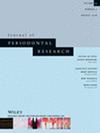Vaspin facilitates the proliferation and osteogenic differentiation of periodontal ligament stem cells
Abstract
Objective
To investigate whether visceral adipose tissue-derived serine protease inhibitor (vaspin) can alleviate the inhibitory effect of high-glucose (HG) culture on the proliferation and osteogenic differentiation of human periodontal ligament stem cells (PDLSCs) and to preliminarily explore the underlying mechanisms.
Background
High glucose produces damage to the regeneration of periodontal tissue of PDLSCs. The expression level of vaspin in periodontal tissue is high in periodontitis patients and effectively reduced after initial therapy of periodontal diseases. However, the effect of vaspin on PDLSCs remains unknown.
Materials and Methods
PDLSCs were cultured in media augmented with 5.5 or 25.0 mM concentrations of glucose to elucidate the impact and mechanism of vaspin on PDLSCs under high glucose in vitro. Proliferation was measured by Cell Counting Kit-8 (CCK8) assay. Osteogenesis of PDLSCs was assessed by alkaline phosphatase (ALP) staining, ALP activity, and Alizarin Red staining. Quantitative real-time polymerase chain reaction (qRT-PCR) and western blot (WB) were used to investigate the osteo-specific markers. Then, the molecular impact of vaspin in the presence/absence of HG on PDLSCs physiology was determined with TGF-β1/Smad signaling pathway as the main focus.
Results
It was revealed that the proliferation and osteogenic differentiation (OD) of PDLSCs under HG was reduced, and by adding vaspin the anti-osteogenic impact of HG was relieved. Moreover, vaspin enhanced TGF-β1/Smad signaling pathway activity. Pretreatment with TGF-β1 inhibitor blocked vaspin-triggered TGF-β1/Smad signal activation and minimized the vaspin-induced protective effect against HG-inhibited growth and OD.
Conclusions
In summary, vaspin observably reduces HG-mediated inhibition of PDLSCs OD by modulating the TGF-β1/Smad signaling pathway. Vaspin may be a potential therapeutic for periodontal tissue regeneration in diabetic patients.

 求助内容:
求助内容: 应助结果提醒方式:
应助结果提醒方式:


